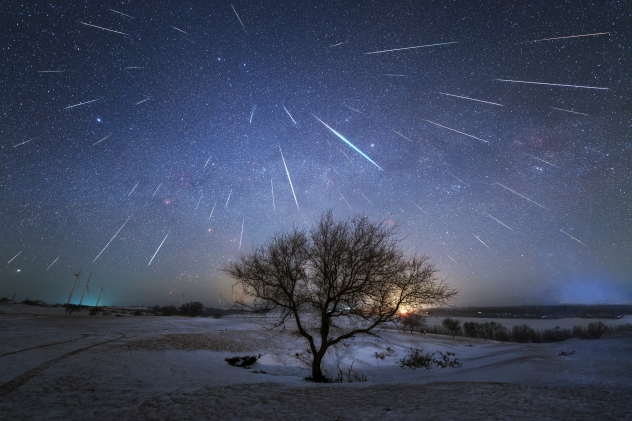
Outburst Of Meteors Possible This Week As Leonids Peak

One of the most famous meteor showers in recent history will take place this week, and while it might not live up to its historical reputation, it could end up being one of the best astronomy events of the year.
The Leonid meteor shower, the third and final such event of the month, will peak Thursday night into early Friday morning. The Northern Taurids and Southern Taurids peaked earlier in the month, combining for only a few meteors per hour, including incredibly bright fireballs that glowed brighter than the moon. The Leonids are not known for fireballs but rather for the sheer quantity of meteors that race through the night sky.
During a typical year, the Leonids bring around 15 shooting stars per hour on peak night. This year has the potential to break from tradition with rates nearly 10 times higher than normal.

The Leonids are famous for producing jaw-dropping meteor storms with thousands of meteors per minute reported in past events in 1833, 1866, 1966, 1999 and 2001. These meteor storms happen when the Earth encounters a fresh trail of debris from a comet identified as 55P/Tempel-Tuttle, producing a celestial light show more akin to a scene from a sci-fi movie than reality.
A full-blown meteor storm is unlikely to unfold this week, but a small outburst is a possibility. According to the American Meteor Society (AMS), meteor experts Mikhail Maslov and Mikiya Sato have run calculations and believe that the Earth could plow through an older debris trail from comet 55P/Tempel-Tuttle.
Onlookers could see anywhere from 50 to 200 meteors per hour if the calculations made by Maslov and Sato are correct. They added that the height of the activity could be brief, taking place Saturday, Nov. 19, between 1 a.m. and 1:30 a.m. EST, meaning that it will be worth watching the Leonids Thursday night into Friday morning and again Friday night into Saturday morning.
Predicting the peak rates during a brief but intense meteor shower can be more complicated than predicting the weather on Earth, so although the outburst is not a guarantee, all signs are pointing toward this year being a good year for the Leonids, at least from an astronomical perspective.
The best viewing conditions Thursday night and Friday morning are predicted to occur over the interior Pacific Northwest, the interior Southwest, the Mississippi Valley and into the mid-Atlantic where mainly clear weather will prevail.
Clouds downwind of the Great Lakes could obscure the sky across the Midwest and interior Northeast, but fewer clouds are in the forecast for the rest of the Northeast in areas farther away from Lake Erie and Lake Ontario. Cloudy conditions are also likely along the Gulf Coast and across the Plains.
A similar forecast is predicted for Friday night into Saturday morning, although there could be fewer clouds along the Gulf Coast and more clouds over California and the Four Corners region.
Meteors associated with the Leonids are often bright, meaning that some shooting stars could be visible in areas closer to big cities, but for the best chance at seeing meteors, it is recommended to travel to a dark away from human-created light pollution.

After the peak of the Leonids, skywatchers will have to wait until mid-December for the next opportunity to watch a meteor shower unfold in the night sky.
The peak of the Geminids will unfold on Tuesday, Dec. 13, into the early hours of Wednesday, Dec. 14. This is typically one of the best meteor showers of the entire year with up to 100 to 150 meteors per hour possible when viewed from a dark area. However, 2022 could be a bad year for the Geminids since a nearly full moon will wash out many of the dimmer meteors on the night of the peak.
After the Geminids, there are only two more meteor showers in the near future. The Ursids will peak on Dec. 21-22 and the Quadrantids will do the same on Jan. 3-4. After these events, stargazers will have to wait until the end of April for the chance to see a meteor shower.
Produced in association with AccuWeather.
The Western Journal has not reviewed this story prior to publication. Therefore, it may not meet our normal editorial standards. It is provided to our readers as a service from The Western Journal.
Truth and Accuracy
We are committed to truth and accuracy in all of our journalism. Read our editorial standards.
Advertise with The Western Journal and reach millions of highly engaged readers, while supporting our work. Advertise Today.










